
No Equipment? No Problem! Build Muscle with These Effective Bodyweight Exercises
When it comes to building muscle, many people assume you need a gym full of weights. However, bodyweight exercises are a highly effective way to gain strength, improve flexibility, and build lean muscle—all without equipment. This guide dives into the benefits of bodyweight training, exercises targeting each muscle group, and tips on progression techniques to help you get stronger over time.
Why Bodyweight Training Works for Muscle Gain and Fitness
Many associate muscle building with heavy weights and equipment, but bodyweight exercises can be just as effective when done consistently and with intensity. Bodyweight exercises train muscles using your own body’s resistance, promoting strength, balance, flexibility, and endurance.
- Scientific Support for Bodyweight Training: Studies have shown that bodyweight exercises can effectively stimulate muscle growth, especially in beginners. They activate multiple muscle groups at once and improve core stability, leading to functional strength.
- Health Benefits: Bodyweight training can reduce the risk of injury, improve posture, and help build a strong foundation for heavier lifting in the future. Additionally, many bodyweight movements improve mobility and joint health, making them ideal for long-term fitness.
- Fitness Accessibility: Bodyweight exercises are available to anyone, anytime. This means you can get a full workout at home, in the park, or while traveling, allowing for consistency and adaptability regardless of location.
Top Bodyweight Exercises for Each Muscle Group
For a balanced bodyweight routine, it’s essential to hit all major muscle groups. Here’s a breakdown of the most effective exercises by area, with tips on technique and progression.
Upper Body
- Push-Ups
- Muscles Targeted: Chest, shoulders, and triceps.
- How to Do It: Keep your body in a straight line from head to toe. Lower yourself slowly until your chest nearly touches the floor, then push back up.
- Progression Tips: For an advanced challenge, elevate your feet or try one-arm push-ups. Alternatively, perform slow negatives to engage muscle fibers more intensively.
- Dips
- Muscles Targeted: Triceps, chest, and shoulders.
- How to Do It: Place your hands on the edge of a sturdy chair or bench, keep your elbows close to your body, and lower yourself slowly.
- Advanced Option: Try dips between two elevated surfaces to increase the range of motion, activating deeper muscle fibers in the triceps and shoulders.
- Inverted Rows
- Muscles Targeted: Upper back and biceps.
- Equipment Alternative: If you have a bar or sturdy table, perform inverted rows to mimic pull-up motions.
Lower Body
- Squats
- Muscles Targeted: Quadriceps, glutes, and hamstrings.
- How to Do It: Keep your feet shoulder-width apart, chest up, and lower your hips back as if sitting in a chair.
- Variation: Try single-leg squats (pistol squats) or add jump squats for an explosive option that builds power and endurance.
- Lunges
- Muscles Targeted: Glutes, quadriceps, and hamstrings.
- How to Do It: Step one foot forward, keeping your upper body straight, and lower yourself until your back knee nearly touches the floor.
- Progression: Add walking lunges, reverse lunges, or lateral lunges for more variety and to work stabilizing muscles.
- Calf Raises
- Muscles Targeted: Calves.
- How to Do It: Stand on an elevated surface and rise onto the balls of your feet, then slowly lower down.
- Advanced Challenge: Perform single-leg calf raises or increase time under tension by holding each rep for 3-5 seconds.
Core
- Planks
- Muscles Targeted: Core, shoulders, and lower back.
- How to Do It: Hold a plank position on your forearms with your body in a straight line.
- Advanced Modifications: Try side planks, plank with leg raises, or mountain climbers for a dynamic core workout.
- Russian Twists
- Muscles Targeted: Obliques and entire core.
- How to Do It: Sit with knees bent, lean back slightly, and twist your torso side-to-side.
- Variation: Hold a weighted object or medicine ball for added resistance.
- Bicycle Crunches
- Muscles Targeted: Abdominals and obliques.
- How to Do It: Lying flat, lift your legs and move in a cycling motion while twisting your torso.
Full-Body Movements
- Burpees
- Muscles Targeted: Full body, including chest, legs, and core.
- How to Do It: From a standing position, drop into a squat, kick your legs back, perform a push-up, and jump back up.
- Tip: Burpees are ideal for cardio, strength, and endurance in one movement, making them a valuable addition to any workout.
- Mountain Climbers
- Muscles Targeted: Core, shoulders, and legs.
- How to Do It: In a high plank position, bring each knee toward your chest in a running motion.
- Cardio Boost: Increase speed for a more cardio-intense variation.
- Jump Squats
- Muscles Targeted: Quadriceps, glutes, and calves.
- How to Do It: Perform a squat, then explode upward, jumping as high as possible.
- Intensity Boost: Perform in rapid succession for added endurance training.
Structuring a Full-Body Bodyweight Workout

Sample Routine for Beginners
This routine combines fundamental movements to build strength and endurance with balanced, targeted exercises.
- Push-Ups: 3 sets of 10 reps
- Squats: 3 sets of 15 reps
- Plank: 3 sets of 30 seconds
- Lunges: 3 sets of 10 reps per leg
- Mountain Climbers: 2 sets of 20 seconds
Intermediate Routine
Designed to increase strength and improve cardiovascular endurance by introducing more challenging variations and high-rep circuits.
- Diamond Push-Ups: 4 sets of 12 reps
- Jump Squats: 4 sets of 15 reps
- Side Plank (each side): 4 sets of 30 seconds
- Bulgarian Split Squats: 3 sets of 10 reps per leg
- Burpees: 3 sets of 10 reps
Progression Tips: As you advance, try increasing your reps, adding explosive movements (plyometrics), or slowing the tempo to increase the challenge.
Progression Techniques for Bodyweight Muscle Growth
Progressive overload is essential for growth, even in bodyweight training. Here’s how to level up:
- Increase Reps and Sets: Gradually add more reps and sets over time.
- Slow Down: Emphasize the eccentric (lowering) phase in exercises like push-ups to build strength.
- Change Exercise Angle: Adjust body position to increase difficulty, like elevating feet during push-ups or doing squats on an incline.
Adding Cardio to Bodyweight Training
To combine strength and cardio, integrate high-intensity bodyweight circuits with minimal rest, or add intervals to keep your heart rate elevated.
- Example: Cycle through push-ups, squats, lunges, mountain climbers, and burpees with minimal rest.
- HIIT Variation: Do 30 seconds of burpees, rest for 15 seconds, and move to the next exercise. Repeat the cycle for a set duration.
Tracking Progress with Bodyweight Training
Keeping a Log: Record your reps, sets, and even perceived exertion for each workout. Assessing Performance: Note any improvements in how long you can hold a plank, reps in push-ups, or endurance in a full-body circuit. Set Small Milestones: Achieving small goals like an extra 5 push-ups per session or holding a longer plank can provide motivation.
Bodyweight vs. Weighted Workouts: Which Is Best?
Both have unique benefits, and your choice may depend on goals and access to equipment.
- Bodyweight Advantages: Great for mobility, functional strength, and injury prevention. Accessible and can be performed almost anywhere.
- Weighted Workout Advantages: Allows for easy progressive overload and faster hypertrophy for muscle-building goals.
- Combining Both: Many find combining bodyweight exercises with weight training provides comprehensive strength and flexibility improvements.
Frequently Asked Questions
Q: Can bodyweight exercises build significant muscle?
A: Absolutely. By progressively increasing difficulty and volume, bodyweight exercises can build muscle. They’re particularly effective for beginners and those working toward functional strength.
Q: How often should I do bodyweight workouts?
A: Three to four days per week is effective, ensuring you leave rest days in between sessions for recovery.
Conclusion
With proper planning, bodyweight exercises provide a powerful, convenient, and versatile way to gain strength, build muscle, and improve fitness. Whether you’re a beginner or an experienced lifter, these exercises offer a valuable toolset to achieve fitness goals without needing a gym or equipment. So, next time you’re ready for a workout, remember: no equipment? No problem!
